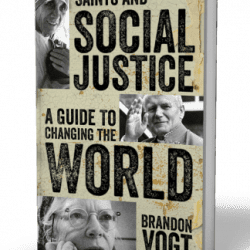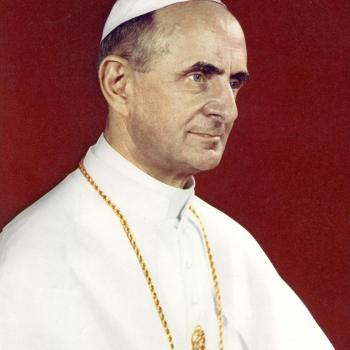With this post I continue (and I hope finish) my very long reflection about the consistent life ethic. The first three parts can be found here: Part I, Part II, Part III. This has taken a lot longer and has been a lot harder than I thought it would be, and of course I saved the hardest part for last.
Today I want to talk about abortion. Given the recent passage of aggressive anti-abortion bills in Georgia, Alabama and Ohio, this post is timely. But I am going to say very little about the current situation, if anything. Rather, I want to round out the foundation on which my views rest. Perhaps in a later post I can try to say a few things, particularly about my adopted state of Alabama.
This post is personally difficult to write, since I am pretty sure that what I say will please a few and anger many. I know that unlike the positions articulated in previous posts, my views on abortion are viewed askance by my liberal and secular friends–at the best they ignore them or simply excuse them as regrettable exception to my otherwise progressive views. And I know from previous posts that my approach to abortion will fail the purity test applied by many staunch members of the pro-life movement. Also, as with my post on race and class, I need to detour and talk a great deal about myself in order to say anything about what I believe.
I do not know when I first began to think about abortion as a moral issue; I think it was some time in graduate school. But self-awareness about abortion is framed by two incidents that happened while I was in college. My first real memory of thinking in any way about abortion was during my first or second year in college. I was on a Greyhound bus going north from Chicago, and was sitting next to a young woman from another university, also on her way home for break. I remember she wanted to talk to distract herself from the pain: shortly before, while studying for finals her roommate had kicked over a popcorn popper and spilled boiling oil all over her arm, which was badly burned. Sitting in the dimly lit bus we had a meandering conversation. At some point she started talking about working as a patient escort at an abortion clinic in Chicago. Sitting across from us was another group of students, all male, from (I believe) Moody Bible College. I suspect they were in transit from/to a demonstration at a clinic, and the student directly across from us had his protest sign, covered with colorful, gruesome images of abortions. Overhearing her, he shoved his sign into view and started saying something. I told him, more or less politely, to shut the hell up and leave her alone. I guess I came across as pretty crazy/scary, because he immediately subsided and we ignored one another for the rest of the trip.
The second incident from college happened in my senior year. A friend of my wife (then my girlfriend) was part of (head of, perhaps) a student pro-life group at our school–I group which I did not know existed until that moment. She had learned that the Knights of Columbus at the local parish were screening a pro-life film, and she wanted to check it out to see if it would be suitable to screen on campus. She invited us along. I remember to discrete bits of the film. First, there was the filmed interview with a very stolid ACLU staff attorney, whom the interviewer was trying to provoke. She did not take the bait, but neither did she (in the clips included) make any kind of case for her position. Second, there was a long interview with a sincere sounding, somewhat over-weight man whose all-encompassing solution the problem of abortion was a presidential proclamation of personhood, modeled on Lincoln’s Emancipation Proclamation. After the film I remember our friend being disappointed, feeling that it had not made the kind of argument that would work with college students.
These two incidents happened over 35 years ago, so many details are lost. I will freely admit that I do not remember my own views on abortion at the time: whether they were mildly pro-life or (more likely) mildly pro-choice, they were not deeply considered. And it may be that what I am “remembering” is not so much my reaction at the time, but rather a palimpsest on which my later views have been written across the memories. But from the encounter on the bus I took away the intensity of that young man’s reaction, his visceral anger, his evident self-righteousness, all of which seemed out of proportion to the situation. In the years since I have encountered other people like this in the pro-life movement–so many that I have never felt comfortable being part of many pro-life groups.
And from the film I remember thinking that the man describing his presidential proclamation was sincere but clueless, proposing a magic wand to make the problem go away. At the time I did not know much about the complex history of the Emancipation Proclamation, but I did know that it took the brutal might of the Union army to enforce it, and that it did very little to bring freed slaves to the “good life” as I discussed in Part III. In the years since, I have watched the pro-life movement focus on a new magic wand–repealing Roe v. Wade–to such an extent that it has become obsessive and has led the movement into an ideological embrace of the Republican party. This is best seen in the successive assertions, both polemical and nonsensical, that Obama was the “most pro-abortion president” in history, and that Trump is the “most pro-life president” ever. (I side with the argument, made most recently by my fellow blogger Mark Gordon, that repealing Roe v. Wade will do very little to affect abortion in America.)
I really began to think about abortion years later when I was in graduate school. A number of things happened during this period to shape my views. During this time I really began to think about life issues more deeply, as I have tried to discuss in my previous posts. Moreover, during this time my oldest son, Nicolas, was born, and he was diagnosed a month after he was born with Down Syndrome. (I have written about Nicolas here and here.) You might say, reversing the classical feminist aphorism, that his birth made the political personal. He also got me to question some of the facile rhetoric surrounding “choice”, particularly in discussions involving fetal abnormality. I am conscious of the relatively privileged situation into which he was born–though I was a broke graduate student, I had a PhD in hand and was fairly certain of some kind of gainful employment. Nevertheless, the reality of of raising a son with disabilities made me suspicious of people who regarded it as such an intolerable burden that they could not conceive of making someone else make such a “sacrifice,” especially when an abortion was such an “obvious” solution.
But it was also in graduate school that I became aware of the progressive pro-life position. Cardinal Bernadin had articulated his “seamless garment” approach to life issues, which in turn led me to investigate the Seamless Garment Network (which has since been renamed the Consistent Life Network). In Berkeley, where I was a graduate student, this was a somewhat motley collection of activists: anti-war, pro-life, animal rights, anti-poverty. But they were united by the fact that they found a common thread in all of these problems: a belief, as the American bishops said in connection with the death penalty, in the tragic illusion that violence could resolve the problems caused by violence in our society. Further, it was a positive vision defined not by what they were against, but what they were for. They wanted to, in whatever ways they could, create a better world, a world, in the words of Peter Maurin, where it was easier for a person to be good.
At the same time I also came into contact with two very different pro-life organizations. The first was Feminists for Life, which, like the Consistent Life Network, situates abortion in a broader vision of the common good. Rather than simply condemning abortion, it focuses on the social and economic structures that make choosing an abortion seem to be the right choice, particularly for women living on the margins. They argued that it was possible to be a pro-life feminist, a view which has earned them opprobrium from both left and right.
Second was CPS, Crisis Pregnancy Services, a “crisis pregnancy clinic” in the Bay Area. My office mate’s wife was a nurse, and she volunteered at CPS. I initially supported them because of this, but over the years I have come to admire this organization greatly. They have changed their name multiple times: First Resort, Third Box, and now Support Circle. Every time, it was because they wanted to make sure that their mission of support for pregnant women was at the forefront. They were opposed to abortion–they never dissembled about that–but wanted to take a positive stance by providing emotional and material support to women who found themselves pregnant and unsure.
In the years since graduate school I have kept my distance from the “established” pro-life movement. I never kept my pro-life views secret: indeed, I went so far as to write about them in the student paper (PDF, see page 3). But beyond financial support, I generally did not get involved. I served on my parish pro-life committee for a couple years, and while the other members were open to listening to me talk about a broader approach, we ended up not doing very much. I did create a few bulletin board displays that got people talking, including one that was headlined with the provocative question “Are you really pro-life?” as a way to challenge people to think about the broader issues involved. Once, at the invitation of a friend from my Franciscan fraternity, I joined a prayer vigil outside the abortion clinic in Hartford. It was an uncomfortable experience, culminating in watching an angry looking white man, working as a sidewalk counselor, chase a visibly frightened Puerto Rican woman to the entrance to the clinic. Most recently, a couple of months ago a representative from the local pro-life group came to our Knights of Columbus council to recruit the members (mostly college students) to join. The heart of his pitch was anti-feminist to the point of misogyny, culminating in the stern warning that it was the responsibility of men to attend their demonstrations to protect women (the weaker sex) from the demonic influences that were present.
I will be frank: this is not a pro-life movement I want to be associated with. I imagine I will be accused of intellectual fastidiousness for this, particularly considering some of the bedfellows I had while working in the anti-death penalty movement. The difference, in my mind, lies in our relationship: I was not joining those other groups–we were agreeing to cooperate on an issue that we shared in common. Similarly, I will donate bottled water, toilet paper and diapers to the local crisis pregnancy center (which the local pro-life group runs) because we have this desire to serve in common.
So where does all of this leave me? I find, philosophically, that I stand firmly behind what I wrote as a young assistant professor 20 years ago:
[W]hat do I mean when I say that I am pro-life? I believe that human life has an intrinsic dignity and worth which must be upheld, and this dignity is continually threatened by a world which seems to have embraced a “culture of death,” in the words of John Paul II. I believe that society has a positive obligation to protect and uphold this dignity, especially for the poor, the marginalized and the voiceless. So in defense of human life I oppose (among other things) militarism, the death penalty, punitive welfare policies, euthanasia and abortion.
Philosophically, there are deep and subtle questions I still grapple with: How does one balance conflicting rights claims? What happens to the autonomy and freedom of individual women when the act of becoming pregnant is irrevocable–especially when this act was not made by conscious choice (e.g., after the failure of birth control), or indeed happened in violation of the woman’s will (e.g., in cases of rape or incest)?
Practically, I worry about how to move forward: what are the steps which will end abortion, or at least reduce it by an order of magnitude? How can these be accomplished given the political polarization in America, where the Democrats seem determined to embrace the most extreme “abortion on demand” stance while the Republicans appear to be willing to tolerate any outrage against human dignity except abortion? A solution similar to those adopted by western European nations, which would require significant concessions by both sides, seems increasingly out of reach.
I do not know. But I know this: as Mother Theresa said,
God does not require that we be successful, only that we be faithful.
Coda: this series of posts started a year ago because I was being considered for a position on the board of the Consistent Life Network. I have been told recently that I am still under consideration. I want to thank the board for their forbearance and consideration; or, to quote John Lennon, “thanks, and I hope we passed the audition.”













